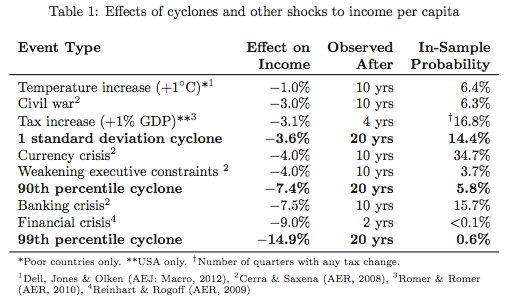As we previously blogged, most recently here, the U.S. Supreme Court’s decision to grant certiorari in Mach Mining, LLC v. EEOC could be a game changer in EEOC-related litigation. In Mach Mining, the Seventh Circuit ruled that an alleged failure to conciliate is not an affirmative defense to the merits of an employment discrimination suit and that it will not scrutinize the EEOC’s pre-suit obligations, so long as the EEOC’s complaint pleads it has complied with all procedures required under Title VII, and the relevant documents are facially sufficient. By granting certiorari, the Supreme Court is set to weigh in during its next term relative to conflicting rulings amongst the circuit courts about judicial authority and standards for reviewing the EEOC’s pre-suit conduct.
In the meantime, however, the show must go on! To that end, a recent decision out of the U.
S. District Court for the Western District of Missouri highlights why the Supreme Court’s eventual ruling in Mach Mining is important. In EEOC v. New Prime, Inc., Judge Douglas Harpool granted, in part, the EEOC’s motion for summary judgment, finding that it satisfied its pre-suit investigation and conciliation obligation despite noting that the court was “underwhelmed by the EEOC’s attempt at conciliation.”
Background
In EEOC v. New Prime, a trucking company maintained a company-wide “same-sex training policy” which required all applicants who did not meet Prime’s experience requirements to receive over-the-road training by an instructor and/or trainer who is the same gender as the applicant unless there is some pre-existing relationship between the female applicant and male instructor/trainer. The effect of this policy was that when a female applicant was ready to be assigned to a trainer or instructor in order to receive the necessary “over the road” training, a female driver had to be available.
However, based on the number of female drivers available to train, Prime would place female applicants on a “female waiting list” when drivers were not available.
Prime implemented this policy after it was involved in a sexual harassment case brought by three female truck driver trainees.
A female job applicant brought a charge with the Missouri Commission on Human Rights (MCHR) and alleged that Prime told her that her application had been accepted, but she could not be hired because she was female and that no female trainers were available then or in the near future.
After the MCHR issued a Probable Cause finding, it transferred the case to the EEOC for further investigation. On April 1, 2010, the EEOC sent Prime a letter stating “the EEOC’s investigation of this charge is nation-wide in scope.” One year later the EEOC issued its Letter of Determination, which stated “[b]ased on the foregoing, there is reasonable cause to believe that Respondent has subjected Charging Party and a class of female trainees to unlawful discrimination by adopting a policy that denies female trainees training and employment opportunities that are not denied to similarly-situated male trainees.” On this same date, the EEOC sent its letter regarding conciliation that focused on relief not only for the party who brought the charge, but also “all identified and still-to-be identified victims.”
On June 7, 2011, Prime submitted its response to the conciliation proposal, which indicated that it was “not interested” in engaging in class-wide conciliation and would only negotiate concerning the individual who filed the EEOC charge. One week later the EEOC informed Prime that conciliation failed and subsequently brought suit in federal court.
The Decision
Both the EEOC and Prime argued that they were entitled to summary judgment on the merits as well as on several evidentiary (e.g. spoliation) and damage (punitive damages) issues. However, especially relevant with Mach Mining on the horizon is the fact that the EEOC decided to move for summary judgment on whether all conditions precedent to the filing of the lawsuit were met. Prime filed its own motion on this point, arguing that the EEOC failed to adequately investigate and conciliation the matter before filing suit.
The court acknowledged that the EEOC is obligated to conciliate in good faith, and that in order to satisfy the statutory requirement of good faith conciliation, the EEOC must “(1) outline to the employer the reasonable cause for its belief that the law has been violated; (2) offer an opportunity for voluntary compliance; and (3) respond in a reasonable and flexible manner to the reasonable attitudes of the employer.” Furthermore, the court held that whether the EEOC adequately fulfilled its obligation to conciliate is dependent upon the “reasonableness and responsiveness of the [EEOC’s] conduct under all the circumstances.”
With respect to its investigatory function, the court held that the EEOC’s initial letters put Prime on notice that it was investigating on behalf of “similarly situated individuals with regard to the same-sex training policy.” Furthermore, Prime was put on notice through the initial charge and the subsequent investigation that any females who were subject to the policy, or more specifically put on the waiting list, were part of the EEOC’s investigation. Since it held that “the EEOC’s scope of the investigation in this matter was clear – it pertained to the same-sex training policy implemented by Prime, including the female waiting list for potential applicants, trainees and potential employees,” the court held that the EEOC adequately investigated the matter with respect to its class-wide claims prior to filing suit.
With respect to conciliation, the court found that the EEOC met the “low hurdle of attempting a reasonable and responsive conciliation process” despite shutting down conciliation one week after Prime submitted its initial response to the EEOC. The court was “not persuaded that this is enough to prevent the case from meeting the requirements for the filing of the instant lawsuit” given that Prime expressed no interest in considering compensation for any women affected by the policy – which is something the EEOC informed Prime it sought as a result of the company-wide alleged discriminatory policy. Accordingly, the court granted the EEOC’s motion for summary judgment, finding that it satisfied all conditions precedent to filing this lawsuit.
Implication for Employers
As this case demonstrates, the eventual ruling by the Supreme Court in Mach Mining has the potential to be a game changer for any employer dealing with the EEOC. If federal courts cannot review its pre-lawsuit conciliation efforts, the EEOC, in effect, will have free reign to pay mere lip service to its conciliation obligations and approach any negotiations in a “take-it-or-leave-it” manner. We will continue to follow developments as the parties and amicus groups file their briefs, and keep our readers informed.
This blog previously appeared on the Seyfarth Shaw website on the EEOC Countdown blog here.




